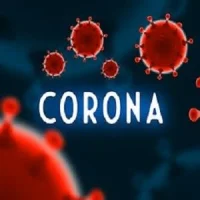In recent years, growing awareness of the burnout syndrome (BOS) has increased the number of initiatives that address clinician wellness and to understand the importance of detecting, addressing, mitigating, and preventing burnout.
Some examples of these initiatives include those by the National Academy of Medicine (NAM), American Medical Association (AMA), American Nurses Association (ANA), and Accreditation Council for Graduate Medical Education (ACGME). The goal of these initiates is to address burnout in healthcare professionals and to highlight the negative impact of burnout on healthcare workers and patients.
You might also like: Professional Coaching Intervention and the Well-being of Physicians
Burnout in healthcare professionals can have an impact on several things. These include workplace morale, patient safety, quality of care, cost of care, and clinician turnover. While burnout is something experienced by healthcare professionals in all areas, critical care clinicians, in particular, have been observed to have heightened risk. According to findings from recent surveys, intensivists exhibit the highest rate of burnout among all specialties and critical care nurses have been shown to have elevated rates of burnout.
The reasons for elevated rates of burnout among ICU clinicians are unique and are mostly related to exposure to pain, trauma, open wounds, death, dying, and tragedy. Critical care physicians and nurses are also under higher pressure to deliver proper care, and the perception that their performance or care delivery may be inappropriate or insufficient is also a factor contributing to burnout. Also, working in the ICU exposes healthcare clinicians to extremely high levels of stress, intra- and interpersonal conflicts, and moral distress.
In any case, there is no single cause that can be identified. Clinician burnout can be due to multiple reasons and is usually very personalised. The increasing clerical burden due to electronic medical record documentation is another major driver of burnout in healthcare. However, as far as burnout in the ICU is concerned, it is essential to directly and interactively address the specific factors that emerge in the ICU.
In 2016, the Critical Care Societies Collaborative (CCSC) that comprises of four critical-care focused US professional and scientific societies including the American Association of Critical-Care Nurses (AACN), American Thoracic Society (ATS), American College of Chest Physicians (CHEST), and Society of Critical Care Medicine (SCCM), published a call for action that reviewed relevant research and addressed interventions that could mitigate burnout. They highlighted the fact that the ICU environment poses challenges to healthcare clinicians because of the nature of critical illness as well as organisational and individual risk factors that could result in moral distress, psychological distress, and fatigue, which in turn, results in BOS. The CCSC has sponsored symposia addressing this issue and has also developed information on BOS, which is available on its website. Also, CCSS promotes social media conversations on this issue using the hashtag #stopICUburnout.
During the National Summit on Prevention and Management of Burnout in the ICU in December 2017, specific discussion on BOS took place, including factors that influence burnout in the ICU, identifying burnout in ICU professionals, the importance of implementing interventions to address burnout, and promoting greater research on this issue. The goal is to communicate that BOS must be recognised as an imminent risk embedded in the fabric of critical care work and to implement measures that would address the stressful ICU environment and help mitigate burnout in ICU clinicians.
A survey was also conducted by the CCSC organisations to assess what resources and measures were implemented at the organisational and unit level to address BOS. 688 critical care clinicians participated in this survey, including physicians, nurses, pharmacists, advanced practice registered nurses, physician assistants, respiratory therapists, dieticians and ICU nurse administrators. Some reported having a wellness committee, healthy food choices on campus, exercise/gym facilities, self-scheduling, interpersonal communication training, personal/respite days, stress reduction classes, and staff support groups. When reporting the perceived level of importance placed on mitigating burnout, only 10.9% of the respondents reported it as being "highly important," 31.7% said "important," 38.9% reported "not important," and 18.6% said "not at all important."
Additional organisational or personal strategies that could promote wellness and resiliency were also highlighted, including vacation time, unit-based celebration of holidays, debriefing sessions after death or difficult situations, unit-based recognition, retention committee, and employee appreciation activities.
The importance of making organisational changes and to promote a healthier work environment was highlighted as a key priority, especially ensuring that ICU clinicians are not overworked. Too many consecutive weeks in the ICU or night shifts can lead to burnout, no matter how many wellness events an organisation offers. It was highlighted that often these initiatives focus on individual wellness but ignore the primary factor - the environment in the ICU. There needs to be a balance between individual wellness and creating a work environment that does not lead to burnout.
ICU care revolves around life-threatening critical illness. But today, the need to prevent burnout in the ICU has also become critical. The future of this professional and the quality of patient care depends on addressing this issue and mitigating burnout.
Source: Critical Care Medicine
Image Credit: iStock
References:
Ruth, K et al. (2020) The Critical Nature of Addressing Burnout Prevention: Results From the Critical Care Societies Collaborative's National Summit and Survey on Prevention and Management of Burnout in the ICU. Critical Care Medicine, 48(2):249-253.
Latest Articles
Critical Care, fatigue, moral distress, burnout syndrome, BOS, psychological distress
Results of expert discussions and recommendations from a National Summit and survey on the promoting wellness and preventing and managing burnout in the ICU.










